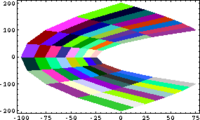
Add your name / see who's in!
|
| #
|
Week of...
|
Links
|
| Fall Semester
|
| 1
|
Sep 10
|
About, Tue, Thu
|
| 2
|
Sep 17
|
Tue, HW1, Thu
|
| 3
|
Sep 24
|
Tue, Photo, Thu
|
| 4
|
Oct 1
|
Questionnaire, Tue, HW2, Thu
|
| 5
|
Oct 8
|
Thanksgiving, Tue, Thu
|
| 6
|
Oct 15
|
Tue, HW3, Thu
|
| 7
|
Oct 22
|
Tue, Thu
|
| 8
|
Oct 29
|
Tue, HW4, Thu, Hilbert sphere
|
| 9
|
Nov 5
|
Tue,Thu, TE1
|
| 10
|
Nov 12
|
Tue, Thu
|
| 11
|
Nov 19
|
Tue, Thu, HW5
|
| 12
|
Nov 26
|
Tue, Thu
|
| 13
|
Dec 3
|
Tue, Thu, HW6
|
| Spring Semester
|
| 14
|
Jan 7
|
Tue, Thu, HW7
|
| 15
|
Jan 14
|
Tue, Thu
|
| 16
|
Jan 21
|
Tue, Thu, HW8
|
| 17
|
Jan 28
|
Tue, Thu
|
| 18
|
Feb 4
|
Tue
|
| 19
|
Feb 11
|
TE2, Tue, HW9, Thu, Feb 17: last chance to drop class
|
| R
|
Feb 18
|
Reading week
|
| 20
|
Feb 25
|
Tue, Thu, HW10
|
| 21
|
Mar 3
|
Tue, Thu
|
| 22
|
Mar 10
|
Tue, Thu, HW11
|
| 23
|
Mar 17
|
Tue, Thu
|
| 24
|
Mar 24
|
Tue, HW12, Thu
|
| 25
|
Mar 31
|
Referendum,Tue, Thu
|
| 26
|
Apr 7
|
Tue, Thu
|
| R
|
Apr 14
|
Office hours
|
| R
|
Apr 21
|
Office hours
|
| F
|
Apr 28
|
Office hours, Final (Fri, May 2)
|
| Register of Good Deeds
|
| Errata to Bredon's Book
|
|
Announcements go here
In Small Scales, Everything's Linear

|

|

|

|

|

|
Code in Mathematica:
QuiltPlot[{f_,g_}, {x_, xmin_, xmax_, nx_}, {y_, ymin_, ymax_, ny_}] :=
Module[
{dx, dy, grid, ix, iy},
SeedRandom[1];
dx=(xmax-xmin)/nx;
dy=(ymax-ymin)/ny;
grid = Table[
{x -> xmin+ix*dx, y -> ymin+iy*dy},
{ix, 0, nx}, {iy, 0, ny}
];
grid = Map[({f, g} /. #)&, grid, {2}];
Show[
Graphics[Table[
{
RGBColor[Random[], Random[], Random[]],
Polygon[{
grid[[ix, iy]],
grid[[ix+1, iy]],
grid[[ix+1, iy+1]],
grid[[ix, iy+1]]
}]
},
{ix, nx}, {iy, ny}
]],
Frame -> True
]
]
QuiltPlot[{x, y}, {x, -10, 10, 8}, {y, 5, 10, 8}]
QuiltPlot[{x^2-y^2, 2*x*y}, {x, -10, 10, 8}, {y, 5, 10, 8}]
See also 06-240/Linear Algebra - Why We Care.
Class Notes
The notes below are by the students and for the students. Hopefully they are useful, but they come with no guarantee of any kind.
Differentiability
Let  ,
,  and
and  be two normed finite dimensional vector spaces and let
be two normed finite dimensional vector spaces and let  be a function defined on a neighborhood of the point
be a function defined on a neighborhood of the point  .
.
Definition:
We say that  is differentiable (diffable) at
is differentiable (diffable) at  if there is a linear map
if there is a linear map  so that
so that

In this case we will say that  is a differential of
is a differential of  at
at  and will denote it by
and will denote it by  .
.
Theorem
If  and
and  are diffable maps then the following assertions hold:
are diffable maps then the following assertions hold:
 is unique.
is unique.
- If
 is linear then
is linear then 

- For every scalar number
 it holds
it holds 
Implicit Function Theorem
Example
Although  does not defines
does not defines  as a function of
as a function of  , in a neighborhood of
, in a neighborhood of  we can define
we can define  so that
so that  . Furthermore,
. Furthermore,  is differentiable with differential
is differentiable with differential  . This is a motivation for the following theorem.
. This is a motivation for the following theorem.
Notation
If  then given
then given  we will define
we will define ![{\displaystyle f_{[x]}:Y\rightarrow Z}](https://wikimedia.org/api/rest_v1/media/math/render/svg/9d064efbcca99f67be8a08c7c4b05c3b09db4ae3) by
by ![{\displaystyle f_{[x]}(y)=f(x;y).}](https://wikimedia.org/api/rest_v1/media/math/render/svg/4f40149c56e0edef88dc0d49abfa472172804efe)
Definition
 will be the class of all functions defined on
will be the class of all functions defined on  with continuous partial derivatives up to order
with continuous partial derivatives up to order 
Theorem(Implicit function theorem)
Let  be a
be a  function defined on a neighborhood
function defined on a neighborhood  of the point
of the point  and such that
and such that  and suppose that
and suppose that ![{\displaystyle d(f_{[x]})_{y}}](https://wikimedia.org/api/rest_v1/media/math/render/svg/286bcb64de94afff8f12a11dbb3341620bac0600) is non-singular then, the following results holds:
is non-singular then, the following results holds:
There is an open neighborhood of  ,
,  , and a diffable function
, and a diffable function  such that
such that  and for every
and for every 
 .
.































![{\displaystyle f_{[x]}:Y\rightarrow Z}](https://wikimedia.org/api/rest_v1/media/math/render/svg/9d064efbcca99f67be8a08c7c4b05c3b09db4ae3)
![{\displaystyle f_{[x]}(y)=f(x;y).}](https://wikimedia.org/api/rest_v1/media/math/render/svg/4f40149c56e0edef88dc0d49abfa472172804efe)






![{\displaystyle d(f_{[x]})_{y}}](https://wikimedia.org/api/rest_v1/media/math/render/svg/286bcb64de94afff8f12a11dbb3341620bac0600)





